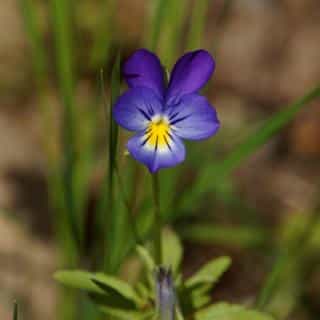

Violet is a very cute flower that flowers in fall and winter or spring depending on the variety.
Name – Viola
Family – Violaceae
Type – perennial
Height – 3 to 6 inches (10 to 20 cm)
Exposure – full sun
Soil – ordinary
Foliage – evergreen
Flowering – Fall to spring depending on the variety
Proper planting and care will help you produce nice flowers.
Make the most of the winter blooming of this cute little flower to garner your garden boxes and flower beds and edges with violet.
Planting of violet purchased in pots or containers is best performed during the entire fall, and even up to the beginning of spring.
Provide soil that is quite rich and well drained for beautiful blooming. But ordinary garden soil is fine, too.
When sowing violet from seed, sow in a nursery from June-July onwards, up until September.
It is highly recommended to transplant first to a nursery pot after 4 to 5 weeks, and then again to the ground in the following fall or spring.
Violet only requires little care, perhaps only a bit of watering if the soil dries up.
You can remove wilted flowers regularly (deadheading) to trigger appearance of new buds.
For violets grown in pots, containers or garden boxes, organize a more regular watering so that the soil mix never stays dry for too long.
If the weather gets really hot in your area, high 80s F or more for weeks on end (30+ °C), a better place for your violets would be partial shade.
A disease that will dot your violet leaves with black spots is Septoria.
If the weather is rainy and humid, you’re likely to notice snails and slugs eating a few leaves. If they have a choice, they’ll prefer other more tender plants.

Indeed, some varieties bloom in winter, and others bloom in spring and sometimes even later.
“Horned violet” looks almost exactly like pansy. They actually belong to the same family, but the violet is much more hardy than the pansy is.
The petals is how you can distinguish pansies from violets.
Since violet is particularly hardy, it will resist winder colds very well, even down to 5°F (-15°C).
You’ll be blessed to have flowers blooming all winter long for some varieties, over a relatively lengthy period.
The violet that blooms in spring is perfect paired with tulips which also bloom at the same time!
It is often arranged together with primroses, tulips and forget-me-nots.
My Violets leaves are looking very ragged & l think there should be more blooms on the plant so do I need to feed & if so what do I use? do I need to use snail bait also I thought Violets didn’t like full sun?
Thanking you.
Hello Jennifer! Ragged edges is certainly a sign of something eating them. If you notice trails of slime, it’s slugs/snails, but sometimes caterpillars might be the cause. Here’s how to get rid of caterpillars.
Feeding is necessary if you’re growing them in a pot, especially if it’s been over a year. There are some easy fermented weed teas you can prepare, they’re all excellent fertilizers. You can also use other fertilizers from nurseries or garden stores, any type of flower fertilizer will do (not so much “leaf plant” fertilizer).
Full sun is perfect where it doesn’t get too hot in summer, so it depends where you live. Full sun in Florida is too much, better have part shade there.